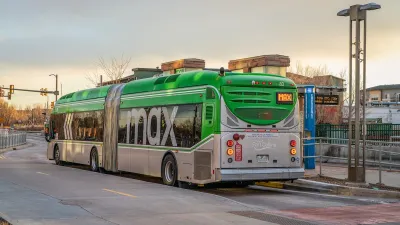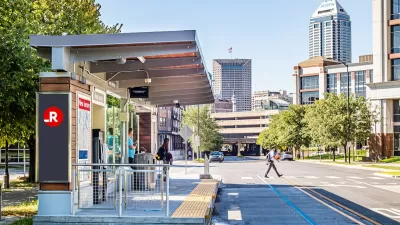Despite being the nation’s 14th largest city, Columbus, Ohio has no high-capacity transit. That could change this November as city officials put a levy before voters that would provide $6.2 billion by 2050 to fund an ambitious bus rapid transit system.

“You'd think with a nickname like ‘Cbus,’ the city would have state-of-the-art public transportation,” begins an article by Columbus Dispatch investigative reporter Jordan Laird. But the truth is, despite being the nation’s 14th largest city, it is the most populous in America without high-capacity transit. The city is served only by Central Ohio Transit Authority buses, which come so infrequently it can take hours to get across the city. City leaders are looking to change that. “Local officials want to catch up to other cities — not by train as local transit enthusiasts have long asked — but by bus. A proposed bus system overhaul could improve service and focus residential and business growth along high-speed bus lines, according to proponents,” Laird reports, and they’re putting it to voters on the November 5 ballot in the form of a levy that would raise COTA’s share of local sales tax from a half-percent to 1 percent and bring in an estimated $6.2 billion by 2050.
The plan, called LinkUS, has been several years in the works. It would build three COTA rapid transit bus lines by 2030, with at least another two planned for later dates. “In addition, LinkUS would also fund 45% more regular bus service; expand a COTA program for cheap rideshare options similar to Uber; and pay to build more than 500 miles of bike paths, sidewalks and trails across Franklin County by 2050.” The move comes as, like many cities across the U.S., bus ridership remains low after the pandemic; “COTA gave 11.12 million rides in 2023, compared to 19.4 million in 2019,” Laird reports. But the city has grown rapidly over the past two decades and that’s anticipated to continue. City officials see it as a preventative measure to rising housing costs and a way to concentrate growth along specific corridors.
The Dispatch article goes into detail about the proposed routes, the deliverables for the BRT plan, service frequency, and more, as well as the city’s reasoning behind choosing BRT and not light rail.
FULL STORY: What to know about COTA levy: Columbus wants to catch up to other cities with rapid bus lines

Planetizen Federal Action Tracker
A weekly monitor of how Trump’s orders and actions are impacting planners and planning in America.

Map: Where Senate Republicans Want to Sell Your Public Lands
For public land advocates, the Senate Republicans’ proposal to sell millions of acres of public land in the West is “the biggest fight of their careers.”

Restaurant Patios Were a Pandemic Win — Why Were They so Hard to Keep?
Social distancing requirements and changes in travel patterns prompted cities to pilot new uses for street and sidewalk space. Then it got complicated.

Platform Pilsner: Vancouver Transit Agency Releases... a Beer?
TransLink will receive a portion of every sale of the four-pack.

Toronto Weighs Cheaper Transit, Parking Hikes for Major Events
Special event rates would take effect during large festivals, sports games and concerts to ‘discourage driving, manage congestion and free up space for transit.”

Berlin to Consider Car-Free Zone Larger Than Manhattan
The area bound by the 22-mile Ringbahn would still allow 12 uses of a private automobile per year per person, and several other exemptions.
Urban Design for Planners 1: Software Tools
This six-course series explores essential urban design concepts using open source software and equips planners with the tools they need to participate fully in the urban design process.
Planning for Universal Design
Learn the tools for implementing Universal Design in planning regulations.
Heyer Gruel & Associates PA
JM Goldson LLC
Custer County Colorado
City of Camden Redevelopment Agency
City of Astoria
Transportation Research & Education Center (TREC) at Portland State University
Camden Redevelopment Agency
City of Claremont
Municipality of Princeton (NJ)





























